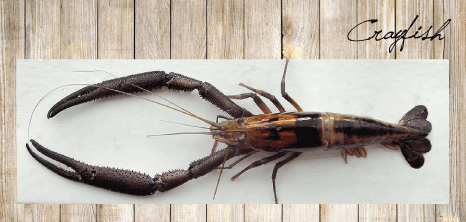|
CrayfishConsidered in Barbados to be one of the most tasty when cooked for a meal, these freshwater shrimp (Macrobrachium carcinus) that we so readily refer to as 'Crayfish', are distinguishable from crayfish, lobsters and crabs due to their two pairs of biting claws, one big and one small.
Easily identified as the largest species of the genus, these crustaceans have been recorded to be an estimated 233mm in length and can be found in just about every fresh water pond and stream.
Living ConditionsThese freshwater shrimp live in brackish water hence the reason adults often migrate downstream to reproduce. Not to mention, the larvae of these species require such conditions to survive.
The presence of freshwater shrimp is an indication of nutrient rich, alkaline waters. Very high levels of dissolved calcium are required by these shrimp in order to develop and maintain their chitinous exoskeleton which is shed on a frequent basis. A wide variety of submergent and emergent aquatic plants require this nutrient rich water for ultimate growth. Submergent vegetation provides the ultimate habitat for these freshwater shrimp. Life ProcessAdult shrimp carry their eggs while they inhabit streams. Eggs then hatch and the larvae are transported downstream where they undergo metamorphosis into adult morphs. After metamorphosis, these larvae migrate upward in to rivers and streams where they spend the majority of their lives.
Trapping methods for these freshwater shrimp include hook, hand, net or dung basket.
|



